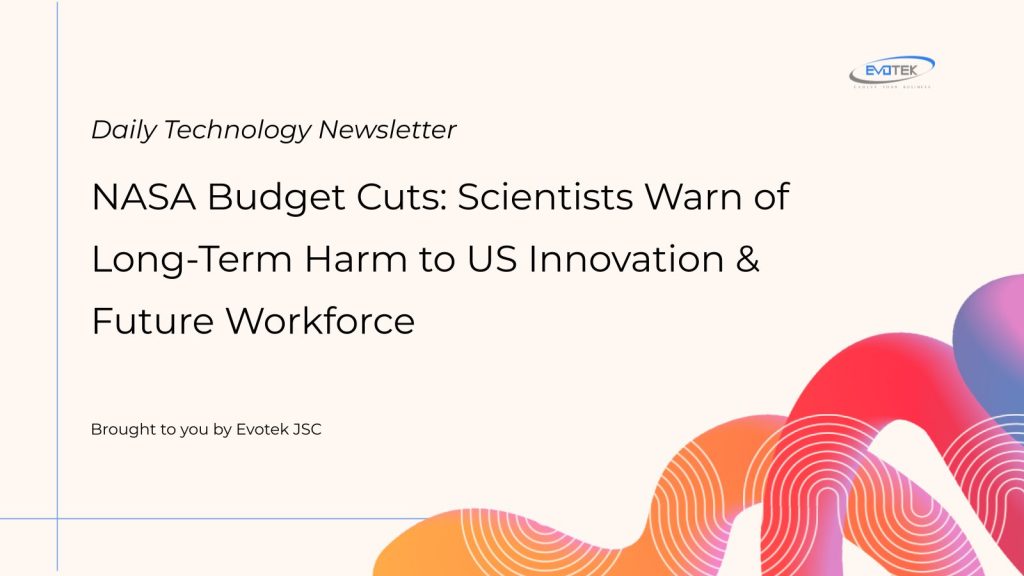Proposed budget cuts to the National Aeronautics and Space Administration (NASA), particularly its vital Earth Science Division (ESD), are drawing strong condemnations from the scientific community. Experts warn these reductions could severely hinder America’s scientific leadership, technological innovation, and its ability to cultivate the next generation of researchers and engineers.
Critical Impact on Earth Science and US Leadership
The Earth Science Division is a global leader in monitoring our planet, providing crucial data on climate, weather patterns, and environmental changes. Researchers from the recently dissolved NASA Earth Science Advisory Committee, in a letter published in the journal Science, expressed grave concerns over a proposed budget cut exceeding 50 percent for the ESD. Such a drastic reduction, they emphasize, would come at a “profound cost to US society and scientific leadership.”
Led by Dylan Millet of the University of Minnesota, the researchers highlighted the disproportionately small investment NASA ESD represents—just 0.03 percent of US spending in 2024. Despite this, they argue, the returns are immense: improved predictions, spurred technological innovation, high-tech job creation, and essential knowledge for both short-term and long-term planning.
The proposed cuts threaten to cancel critical satellite missions observing Earth and its atmosphere, deplete US science and engineering expertise, and potentially lead to the closure of NASA research centers. A particularly concerning consequence is the impediment to “training and preparing the next generation of the scientific and technical workforce,” which could have lasting negative effects on the nation’s capabilities.
Broader Ramifications for NASA’s Science Mission Directorate
The ESD cuts are part of a broader challenge facing NASA’s overall Science Mission Directorate (SMD), which oversees all of the agency’s scientific endeavors. In an unprecedented move, every past administrator of the SMD, the agency’s top science leadership position, recently signed a letter urging Congress to reject proposed cuts of approximately 47 percent to the directorate.
These former leaders, intimately familiar with the long-term vision required for space exploration, warned that the proposed budget “ends nearly all future investments for both new missions and advanced technology for science.” They criticized the proposal for abandoning dozens of highly successful and productive science missions currently in extended operations, which collectively account for only about three percent of NASA’s annual funding.
While the US Senate appropriations committee has voted in favor of a bill rejecting these science cuts, the legislative process is ongoing and the outcome remains uncertain. Turning a blind eye to Earth science, especially when human activities are profoundly reshaping the planet’s climate and biosphere, would represent an immeasurable loss.
Other Discoveries from the World of Science
Beyond the critical discussions around NASA’s future, the scientific community continues to unveil fascinating insights across various disciplines:
Halley’s Comet: Preparing for the 2061 Return
Scientists are already planning for the next spectacular return of Halley’s Comet in the summer of 2061. Researchers, led by Cesare Barbieri of the University of Padova, have proposed an ambitious space rendezvous mission. Despite the decades-long lead time, early planning is crucial to leverage present-day rocket and technology capabilities, ensuring optimal observation of the iconic visitor which will be better positioned for terrestrial observers than in its 1985–1986 apparition.
Unraveling a Bronze Age Sacrificial Mystery
Archaeological research at the Tell eṣ-Ṣâfi/Gath site in Israel has shed new light on Bronze Age ritual practices. A study published in PLOS ONE details the discovery of female donkeys imported from Egypt some 5,000 years ago for cultic purposes. One particular specimen, EQ1, stands out due to its decapitation and tied limbs, suggesting a deliberate sacrifice. Isotopic analysis revealed EQ1 was treated uniquely, possibly viewed as an “exotic and special animal” deserving of specific ritual use, highlighting a poignant narrative inferred from ancient remains.
The Universal Traits of “Coolness”
What makes someone “cool”? A study published in the Journal of Experimental Psychology, involving nearly 6,000 participants across diverse countries, sought to define this elusive social attribute. The research identified six core traits consistently associated with cool individuals globally: being extraverted, hedonistic, powerful, adventurous, open, and autonomous. These traits were distinct from those linked to “good” people, suggesting a stable, cross-cultural understanding of coolness.
“Grand Theft Moons”: Exploring Habitable Exomoons
In a study with an intriguing title, “Grand Theft Moons,” researchers explored the formation and potential habitability of exomoons. Published in Astronomy & Astrophysics, the research modeled exomoon formation around giant gas planets and considered the intriguing possibility of “stellar theft,” where stars might pull moons away from their planets. The findings suggest that moons with masses between Mars and Earth could form around Jupiter-sized planets, potentially offering habitable environments at certain stellar distances, urging further investigation beyond just rocky exoplanets for signs of life.

 日本語
日本語 한국어
한국어 Tiếng Việt
Tiếng Việt 简体中文
简体中文